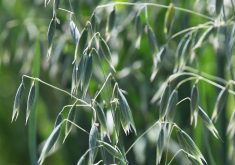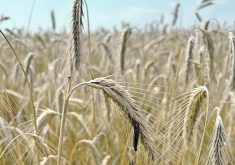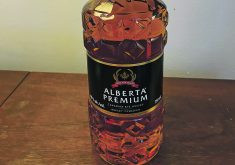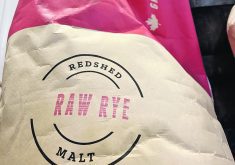Half of prairie rye acres are now hybrids, which has increased yields by more than 20 percent in good growing conditions
This is part of an ongoing series of stories exploring rye, the crop, as it becomes Rye, the whisky.
Rye has been grown as long as there have been farmers on the Prairies, but little of that experience and history means much when it comes to today’s hybrid varieties.
The rye varieties that are seeing a rebirth of the crop among old and new farmers aren’t like the old faithfuls.
Other stories in this series:
Read Also

Huge Black Sea flax crop to provide stiff competition
Russia and Kazakhstan harvested huge flax crops and will be providing stiff competition in China and the EU.
- More producers start growing rye as crop prepares for a recovery
- Farmer finds new uses for old crop of rye
- Growing rye for seed is quirky but fun
- Rye’s agricultural journey set over thousands of years
“We’ve just been fiddling with what are the agronomics in Western Canada versus Europe,” said Nathan Penner, director of commercialization for FP Genetics, the dominant hybrid rye seed provider.
“It’s been figuring out the agronomy package.”
Hybrid rye varieties have gobbled up about half of Western Canada’s acreage in the last decade, providing a yield bump of more than 20 percent in good rye-growing conditions. That’s seen rye growers adopt the European-based hybrid varieties while open pollinated varieties remain grown in non-optimal conditions and for silage. On the eastern Prairies, hybrid ryes are becoming dominant, while in southern Alberta and the foothills, open pollinated ryes continue to hold sway.
“The gap (in yields between open pollinated and hybrid) tends to shrink” in areas where rye has a tougher time growing, Penner said. Farmers who don’t see a reliably higher yield bump of 20 to 30 percent often don’t want to pay the higher prices for hybrid seed, nor can they save seed for subsequent years. For farmers focused on silage or needing to keep costs low, open pollinated varieties continue to have an important role, so seed growers keep producing both open pollinated and hybrid varieties.
But the realized potential of the hybrids has built a loyal farmer base on the eastern Prairies. With the right varieties in the right conditions, the crop works out.
“We haven’t been so much selling varieties as selling agronomy,” said Penner.
“We’re asking those winter varieties to survive 11 months of the Canadian climate.”
FP Genetics, which is mostly owned by pedigreed seed growers, first began looking at European hybrid rye varieties in 2014, bringing some to the market in 2015. At that time the only open pollinated varieties were getting old, and Agriculture Canada had dropped rye breeding from its main research work.
AC Hazlet had been developed by Grant Macleod in the mid-2000s and still today is an important variety of open pollinated rye.
A treasure chest of rye varieties existed in central Europe, with rye seed giants KWS and Saaten-Union holding many competitive rye varieties that thousands of farmers were profitably growing, but their ability to thrive in Western Canada was unclear.
FP began working with KWS varieties, screening good-looking candidates and ditching the ones that didn’t turn out in the harsher Canadian conditions. Finding what could do well and how to make those varieties do well was a challenging process, Penner said, but in the end some hardy, high-yielding varieties became obvious and those became the ones they brought to market.
The next challenge was finding farmers who would want to adopt the crop. For many, rye had dropped out of the rotation years earlier. And many farmers had evolved their management to make fall crops awkward and not worth the bother. The right kind of farmer was needed for this new version of the old crop.
“It’s usually a grower who’s willing to adapt,” said Penner.
That tends to make this specialty crop remain a specialty. It doesn’t fit with farms that want to keep the combine in the shed till late August, nor those unwilling to juggle combining and seeding at the same time in the autumn.
It also requires a farmer who is willing to play with different markets, such as distilling and milling, rather than the usual bulk grain channels.
The new hybrid ryes are coming along just as small parts of the overall rye market are soaring in interest. Rye whisky has become a valued part of the whisky world in the United States, while the drive by the U.S. government and others for much more cover-cropping has ignited interest in the long-ignored cereal.
“It’s quite startling,” said Penner about the U.S. Department of Agriculture’s desire to see cover-crop acres double in the next few years.
That might actually create a seed shortage if too many farmers jump on rye at the same time, Penner said.
Rye seed production in Canada is changing, with KWS moving to manage its own production and distribution to farmers, and FP Genetics bringing in new varieties from the other big European provider, Saaten-Union.
“It’s all about bringing more options for farmers,” said Penner.
Both rye in general and hybrid varieties specifically are finding good acceptance these days from millers and distillers, mostly in the U.S., who are keen to be able to claim their products are “sustainably” produced. Rye’s cover-crop nature, the diversity it brings to farmers’ rotations if added, and its general hardiness in the face of the changing climate make the crop tick many boxes on the sustainability list.
The hybrid varieties are also pleasing distillers, Penner said, because they provide a more consistent crop that doesn’t force distillers to make as many alterations to their processes and equipment.
Rye flavour is valued and highlighted by distillers due to its rich and “spicy” nature, lauded on a plethora of premium-priced bottles, similar to that in rye bread.
However, distillers have often been frustrated by the lack of uniformity in the rye crops they purchase. Hybrid varieties alleviate this problem, bringing the crop closer to the consistency typical of other cereals.
That’s gradually building the farmer base for the crop. Even though acreage is not expanding dramatically, the yield bump from the hybrids mean more grain-quality rye is being grown these days, and dedicated growers are becoming more common.
“We’re essentially seeing the resurgence of rye,” said Penner.


















